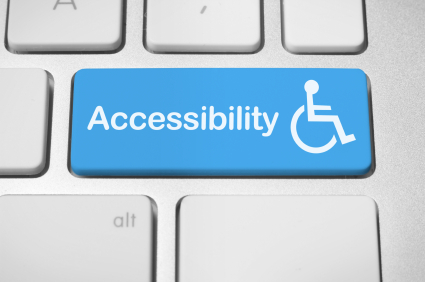Computer Technology for People with Disabilities
Posted on 05/01/2018 by Jonathan O'Brien

Physical disabilities present a variety of barriers that can prevent people from performing typical activities. Disabilities may include visual impairments, hearing impairments, speech impediments, and impairments of fine and/or gross motor skills such as writing, hand movement, or walking. As technology marches onward, computers are coming to the aid of people with disabilities, making it possible for them to perform more activities with an increasing amount of independence. Thanks to assistive technology, a computer can help disabled people with a broad range of activities.
Adaptable Workstations
The ability to use a computer can enable people to access resources as varied as social networking sites and grocery delivery services. However, computer use can be difficult for some disabled people. In these cases, adaptive technology can help people input data into a computer or interpret the data on the screen. Even the physical position of computer keyboards and monitors can be flexible to meet user needs. For example, a person who is unable to use their hands to input data with a standard keyboard can get special input devices such as a pointing device or a head stick to control the computer. Special software programs can also help by storing frequently used sequences of keystrokes so they're easier to input. Someone sitting in a wheelchair might have a special keyboard mount or a tray to hold the keyboard in a position where pressing keys or using a pointing device is possible. Special keyboards are even available with oversized keys or keys spaced an extra distance apart for people with fine motor skill impairment. Smaller keyboards can help those with range of motion issues who can't use a typical keyboard. Special equipment is also available to replace a standard mouse, giving users easier inputting and selection ability. Some systems can even be controlled by voice for users who cannot manipulate any type of manual equipment.
Tools for Specific Disabilities
People with paralysis or amputations can use a special impulse system that connects to the skin in order to interact with a computer. A facial movement such as a wink can send an impulse to the system, which results in a computer command. This can enable people to use a computer even if they have very limited ability to move. These systems involve different types of movements such as winking, moving the eyes, or puffing air out of the mouth.
Someone suffering from a repetitive strain injury could use a special system that controls a computer with the feet instead of hands and fingers. Special pedals control the cursor, enabling the user to select and click as desired. Very little foot pressure is required.
People with very poor eyesight can use a screen magnifier to bring text and images into focus. A number of display options enable users to configure the screen to fit their needs. Software can also read text from emails, documents, and Web pages aloud. While a user is inputting text, the software can read back the words typed. Computer users who are entirely blind can also install a braille keyboard so they can type. If they choose not to use screen-reading software, another option is a braille display, a device that translates the text on the screen into braille letters for them to read.
People with hearing impairments can install special audio processing software that amplifies the audio on computers. This software also helps to filter out background noise, which often interferes with comprehension. Users can adjust the tone and volume to match their unique needs.
Assistive Technology Programs
Assistive technology programs may be run by state and local municipalities as well as advanced learning institutions. These programs are designed to assist people with disabilities by matching them with computer software and hardware that will provide greater access and independence. Experts can provide training and guidance to assist people with learning how to use special software or hardware. Programs may manage grants that can help pay for assistive technology for individuals. Programs may also loan out devices or connect people with agencies that allow people to borrow equipment.
- Working Together: People With Disabilities and Computer Technology
- 14 Great Computing Aids for the Disabled
- What Is AT? Assistive Technology Industry Association
- Assistive Technology for Kids With Learning Disabilities: An Overview
- How People With Disabilities Use Computers
- Association of Assistive Technology Act Programs
- Microsoft Excel Training
- Assistive Technology and How it Works
- Types of Assistive Technology Products
- 14 Tech Tools That Enhance Computing for the Disabled
- Microchip Could Help Paraplegics Control Computers
